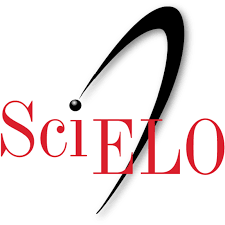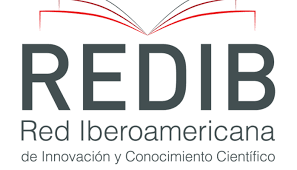Floral phenology of nine poinsettia varieties (Euphorbia pulcherrima Willd. ex Klotzsch).
Keywords:
Anatomical changes, flowering and fruit development, phenological statesAbstract
Most phenological studies focus on the observation of changes in the morphology of the plant, with relatively rapid appearance, transformation or disappearance of certain organs or different events, which are called phenological phenomena. The interval between two events or phenological phenomena defines a phenological state or development phase of plants. The objective of this work was to document the floral phenology of poinsettia and its anatomical changes, to define aspects related to genetic improvement. Three varieties of poinsettia and six shade cultivars were studied. The recording of the observations of the phenological phases of flowering began with the pigmentation of the central midrib of the bract, which shows the beginning of the reproductive phase, daily observations were made to describe the successive phenological changes until the formation of fruits; The international Biologische Bundesanstalt, Bundessortenamt und Chemische (BBCH) scale, which provides a decimal coding system, was used to describe the different phenological stages. The duration of flowering was recorded (in days). The duration of flowering differed in each of the phenological stages among varieties. On the sun poinsettias the onset of the ciatus development occurs in an ascending manner, while on the shadow poinsettias it occurs in descending manner. The results allowed documenting the floral phenology with which, in later works, a genetic improvement program can be established that allows for crossbreeding between varieties
References
Bleiholder H, Van Den Boom T, LangelÜddeke P, Strauss R (1989). Einheitlich Codierung der phänologishen Stadien bei Kultur‐ und Schadpflanzen. Gesunde Pflanzen 41:381-384. Google Scholar
Dorthea NM, Farestveit B, Skytt A A (2003). Adventitious Shoot Development from Decapitated Plants of Periclinal Chimeric Poinsettia Plants (Euphorbia pulcherrima Willd ex Klotsch). Europ. J. Hort. Sci 4: 161–168. http://www.pubhort.org/ejhs/2003/file_6391.pdf
Ecke P, Faust J E, Higgins A, Williams J (2004). The Ecke Poinsettia Manual. 1st. edition. Ball Publishing. Batavia, Illinois 60510. 287 pp.
Elias TS, An-Ci S (1985). Morphology and Anatomy of Foliar Nectaries and Associated Leaves in Mallotus (Euphorbiaceae). J Syst Evol. Bot. 11: 17-25. http://doi:10.5642/aliso.19851101.03
Gales R, Toma C, Lăcrămioara I (2008). Morphological and histo-anatomical aspects regarding the floral morphogenesis in Euphorbia cyparissias L. (Euphorbiaceae juss.). Biol. Veg. 18:21-24. http://www.bio.uaic.ro/publicatii/anale_vegetala/issue/2008F2/02-2008F2.pdf
Grueber, K L (1985) Euphorbia pulcherrima. In: Handbook of Flowering Vol. II. Halevy, A. H. pp. 488–495. (ed.). CRC Press, Inc. Boca Raton. Florida, USA.
Hack H, Bleiholder H, Buhr I, Meier UND, Schnock-Fricke U, Weber E, Witzenberger A (1992). Einheitliche codierung der phänologischen entwicklungsstadien mono-und dikotyler pflanzen- erweiterte BBCH-skala, Allgemein- Nachrichtenbl. Deut. Pflanzenschutzd 44:265-270. Google Scholar
Hayashi T, Wakahara Y, Konishi K (1990). Development and composition of compound inflorescence in Poinsettia.J.JAPAN Horticulture Society 4:839-845. https://doi.org/10.2503/jjshs.59.839
Huang CH, Chu CY (2008). Methods to improve Poinsettia fertility. Sci. Hortic. 3:271-274. Google Scholar
Lee IM (2000). Phytoplasma casts a magic spell that turns the fair poinsettia into a Christmas showpiece. P. H. P. doi: 1094/PHP-2000-0914-01-RV.
Lutken H, Clarke JL, Muller R (2012). Genetic engineering and sustainable production of ornamentals: current status and future directions. Plant. Cell. Rep. 31:1141-1157. doi: 10.1007/s00299-012-1265-5.
Mantovani M, Ruschel AR, Sedrez dos Reis M, Puchalski, Nodari RO (2003). Fenologia reproduiva de espécies arbóreas em uma formação secundária da floresta Atlântica. Rev. Árvore 27:451-458. http://www.scielo.br/pdf/rarv/v27n4/a05v27n4
Martinelli T, Andrzejewska J, Salis M, Sulas L (2015). Phenological growth stages of Silybum marianum according to the extended BBCH scale. Ann. Appl. Biol. 166:53-66. https://doi.org/10.1111/aab.12163
Mwine TJ, Van Damme P, Gerard K, Charles K (2011). Ethnobotanical survey of pesticidal plants used in South Uganda: case study of Masaka district. J. Med. Plants Res. 5:1155–1163. http://hdl.handle.net/1854/LU-1966602
Narbona FE, Ortiz PL, Arista M (2000). Ciatios masculinos en dos especies perennes de Euphorbia (Euphorbiaceae): E. boetica Boiss. y E. nicaeensis All. Anales Jard. Bot. Madrid 58:183. https://doi.org/10.1093/aob/mcf099
Narbona E, Ortiz PL, Arista M (2011). Linking Self-Incompatibility, Dichogamy, and Flowering Synchrony in Two Euphorbia Species: Alternative Mechanisms for Avoiding Self-Fertilization? PLoS ONE 6(6): e20668. https://doi.org/10.1371/journal.pone.0020668
Ramírez-Bullón N, Ceroni-Stuva A, Castro-Cepero V (2014). Fenología de cuatro especies de cactáceas del Cerro Umarcata Valle del Río Chillón.Canta-Lima. Perú. Ecología aplicada 13:177-185. http://www.scielo.org.pe/pdf/ecol/v13n2/a12v13n2.pdf
S. A. S. Institutre, Inc. (1990) Statistical Analysis System.User’s guide.U. S. A. Janen T. Helwing and Khathryn A. Council.
Sharma M, Sharma KC (1988). Ontogenetic Studies of shoot apical organization in Poinsettia. Flora 11:267-274. https://kundoc.com/queue/pdf-ontogenic-studies-of-shoot-apical-organization-in-poinsettia-.html
Struckmeyer BE, Beck GE (1960). Flower bud initiation and development in poinsettia (Euphorbia pulcherrima Willd). Proc. Am. Soc. Hortic. Sci.75:730 -738. Google Scholar
Taylor JM, Lopez RG, Currey CJ, Janick J (2011). The poinsettia: history and transformation. Chron. Horticult. 51:23-28. https://www.actahort.org/chronica/pdf/ch5103.pdf#page=23.
Tejera MD, Heaton EA (2017). Description and codification of Miscanthus × giganteus growth stages for phenological assessment. Front. Plant. Sci. 8:1726. https://doi.org/10.3389/fpls.2017.01726
Torres-Olivar V, Villegas-Torres OG, Valdez-Aguilar LA, Alia-Tejacal I, López-Martínez V, Trejo-Téllez LI (2015). Respuesta de la nochebuena (Euphorbia pulcherrima Willd. ex Klotzsch) a la relación nitrato:calcio en tres etapas fenológicas. REMEXCA 12:2345- 2357. http://www.redalyc.org/articulo.oa?id=263143809008
Trejo L, Feria TP, Olsen KM, Eguiarte LE, Arroyo B, Gruhn J, Olson ME (2012). Poinsettia´s wild ancestor in the mexican dry tropics: historical, genetic, and environmental evidence. Am. J. Bot. 99:1146-1157. https://doi.org/10.3732/ajb.1200072
Webster GL (1994). Classification of the Euphorbiaceae. Ann. Mo. Bot. Gard 81:3-32. https://herbarium.ucdavis.edu/publications/webster/93.Annals%20of%20the%20Miss%20Bot%20Garden%2081b.pdf
Zadoks JC, hang TY, Konzak CF (1974). A decimal code for the growth stages of cereals. Weed Res. 14:415–421. http://dx.doi.org/10.1111/j.1365-3180.1974.tb01084.
Downloads
Published
Issue
Section
License

Polibotánica by Departamento de Botánica de la Escuela Nacional de Ciencias Biológicas del Instituto Politécnico Nacional se distribuye bajo una Licencia Creative Commons Atribución-NoComercial-CompartirIgual 4.0 Internacional.




















